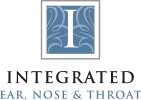DEVIATED SEPTUM

A deviated septum occurs when the internal dividing wall between the right and left sides of the nose–the nasal septum–shifts away from the midline. When the septum is crooked, it causes obstruction of the nasal airways and makes breathing difficult.
Function of the Septum
The septum is comprised of bone and cartilage and is surrounded on each side by a mucosal lining. This mucosal lining covers and protects the cartilage and bone, and helps to keep the inside of the nose moist. The septum also allows for the direct transit of the air that we breathe in through our nostrils to go directly into the lungs.
Causes of a Deviated Septum
A deviated septum is usually genetic or random, but may also be the result of injury or trauma to the nose.
Symptoms of a Deviated Septum
Nasal congestion is the most common symptom associated with a deviated septum, and this congestion is usually worse on one side, and sometimes occurs on the side opposite the bend. Other symptoms include difficulty breathing, recurrent or repeated sinus infections, frequent nosebleeds, facial pain, headaches, loud breathing, snoring and mild sleep apnea. For some patients, the crooked septum can interfere with the drainage of the sinuses, resulting in repeated sinus infections.
Deviated Septum Diagnosed
As part of your initial assessment, your ENT (ear, nose, and throat) doctor will ask you about your symptoms and if you have ever incurred trauma to your nose or if you have ever had previous nasal surgery. Your doctor will then examine the general appearance of your nose, including the position of your nasal septum, using a lighted small endoscope to inspect the nasal cavity from the front all the way to the adenoid area in the nasopharynx. For some patients, CT scans and allergy testing may also be ordered. If the deviated septum is causing troublesome nosebleeds or recurrent sinus infections, surgery may be the recommended treatment. Surgery would also be recommended if the deviation is determined to be a significant causative factor of your nasal obstruction.
Nasal Obstruction
Nasal obstruction refers to some blockage of the nose or nasal cavity. There are many things that can cause nasal obstruction. Allergies, for some patients, can lead to swelling of the nasal and sinus lining, which causes congestion and blockage. For other patients, the blockage may be due to a simple anatomical obstruction, such as an enlarged nasal turbinate, a polyp in the nasal passage, or a deviated septum.
Non-surgical Treatment Options
There are a couple of non-surgical options available for patients to help alleviate symptoms associated with a deviated septum. These include Allergy Treatments and Medications:
- Allergy Treatments can help to decrease the swelling of the lining of the septum and surrounding tissue, thereby decreasing nasal congestion.
- Medications can also be used to ease symptoms. Your doctor may prescribe one or more of the following, depending on the severity of your symptoms:
- Antihistamines
- Decongestants
- Nasal Antihistamine Sprays
- Nasal Steroid Sprays
Note, however, that these options do not correct the septal deviation.
Recommended Treatment for a Deviated Septum
Septoplasty is the preferred surgical treatment to correct a deviated septum and improve breathing. It is a minor, minimally-invasive, outpatient procedure. The procedure can frequently be done in the office under local anesthesia with oral sedation. The procedure is performed entirely through the nostrils where the surgeon makes a small incision in the septum and then removes the excess bone or cartilage required to even out the breathing space of the nostrils.
Ideal Candidate for Septoplasty
A septoplasty procedure is often recommended for patients who:
- Have a persistent nasal obstruction where the deviated septum is determined to have played a significant role in the symptoms;
- Have symptoms of nasal blockage and congestion; and
- Have not responded to medical therapy (prescribed and over-the-counter medications).
For these patients, a septoplasty can have a major, positive impact on nasal breathing, congestion, and quality of life.
Septoplasty FAQs
A septoplasty procedure is generally recommended for adults 16 years and older. It is generally recommended that a person has completed puberty before a septoplasty is recommended.
If a septoplasty is the only procedure performed, there should be little to no bruising after surgery.
The procedure takes, on average, 1 to 1 ½ hours, depending on the deviation.
Many surgeons perform septoplasty without packing or septal splints. If nasal packing is used, it is inserted to prevent excessive postoperative bleeding. Talk to your surgeon about his/her standard practice.
This procedure can be done using a local or a general anesthetic and is usually done on an outpatient basis.
You can expect to have mild pain, fatigue, nasal stuffiness, and mild nasal drainage after your surgery. The stuffiness typically results from swelling after the procedure and typically starts to improve after the first week. Most patients find that postoperative pain is easily managed with low-dose narcotic medications, such as Tylenol with Codeine or Tramadol, for 1-2 days. After that, patients may switch to regular or extra-strength Tylenol and ibuprofen (taken together to control both pain and swelling) for another week or so.
Sutures may be used to sew the skin incision site and mucosal flaps together at the end of surgery. Frequently, if an incision is made into the mucosa, sutures are not placed. If sutures are placed, they are typically dissolvable and do not require removal.
After surgery, you may have drainage of some mucus and blood from your nose. This is a normal part of the healing process.
Many patients typically take several days to a week off from work for recovery. During this time, patients are advised to refrain from heavy lifting or vigorous activity for 1-2 weeks.
After surgery, there are no restrictions on eating or bathing. Actually, you may eat whatever you feel like eating.
If a deviated septum is the sole cause for your chronic sinusitis, you can expect improved nasal breathing and airflow, decreased blockage and congestion, diminished dry mouth, and a more complete, restful sleep. Overall, you will experience relief from your symptoms and improved quality of life.
Septoplasty can be frequently combined with turbinate reductions, and/or balloon sinuplasty and functional endoscopic sinus surgery. These procedures should not leave any bruising or facial swelling. Septoplasty can also be performed in conjunction with a rhinoplasty (nose job), and if this happens bruising and swelling are more common. The ENT surgeon will work in conjunction with a facial plastic surgeon to perform those procedures.
Contact Us
If you are having nasal symptoms and think you may have a deviated septum, contact Integrated ENT of Lone Tree (303) 706-1616 to schedule a consultation for evaluation, diagnosis, and treatment.







